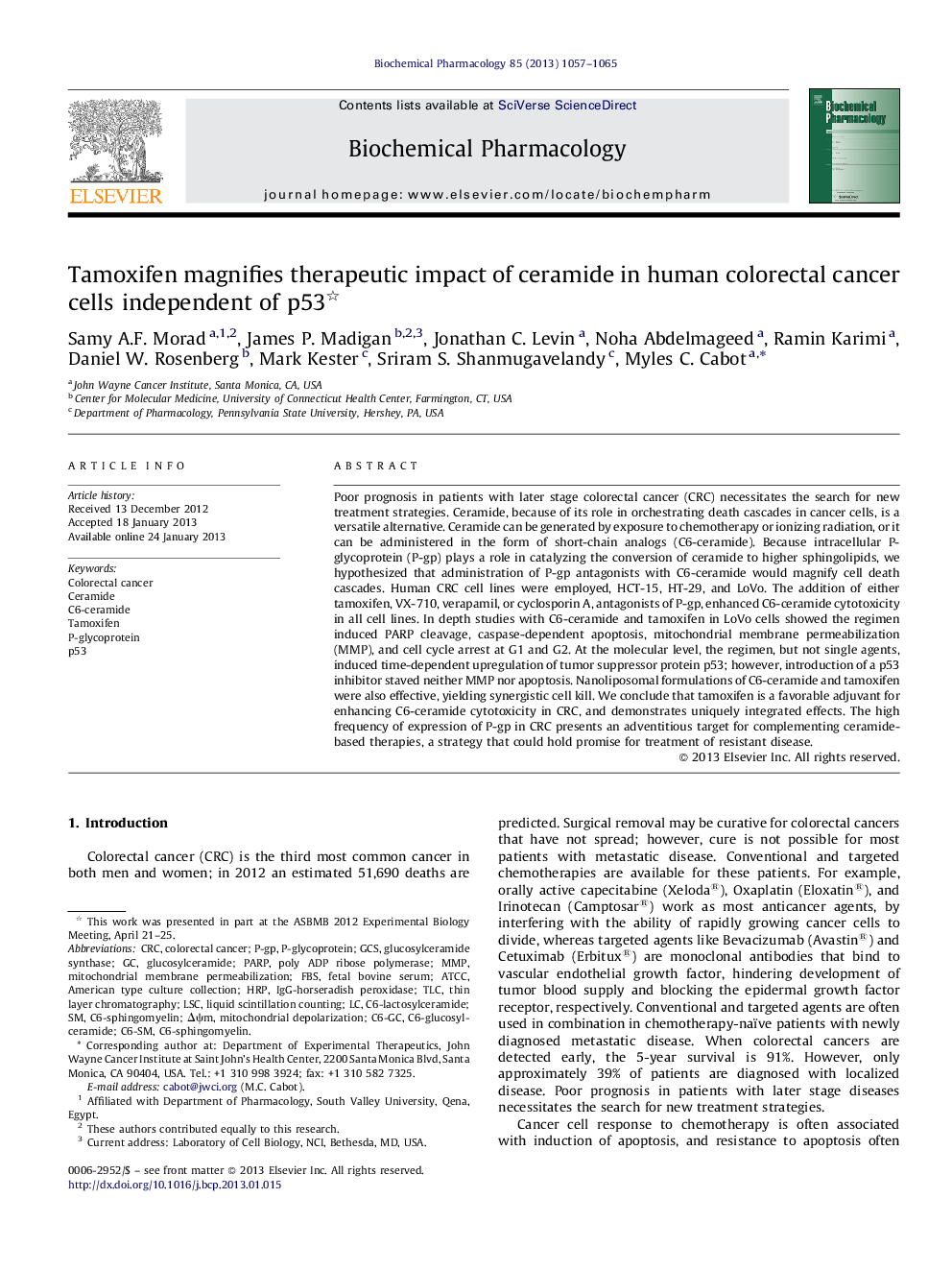| Article ID | Journal | Published Year | Pages | File Type |
|---|---|---|---|---|
| 2512618 | Biochemical Pharmacology | 2013 | 9 Pages |
Poor prognosis in patients with later stage colorectal cancer (CRC) necessitates the search for new treatment strategies. Ceramide, because of its role in orchestrating death cascades in cancer cells, is a versatile alternative. Ceramide can be generated by exposure to chemotherapy or ionizing radiation, or it can be administered in the form of short-chain analogs (C6-ceramide). Because intracellular P-glycoprotein (P-gp) plays a role in catalyzing the conversion of ceramide to higher sphingolipids, we hypothesized that administration of P-gp antagonists with C6-ceramide would magnify cell death cascades. Human CRC cell lines were employed, HCT-15, HT-29, and LoVo. The addition of either tamoxifen, VX-710, verapamil, or cyclosporin A, antagonists of P-gp, enhanced C6-ceramide cytotoxicity in all cell lines. In depth studies with C6-ceramide and tamoxifen in LoVo cells showed the regimen induced PARP cleavage, caspase-dependent apoptosis, mitochondrial membrane permeabilization (MMP), and cell cycle arrest at G1 and G2. At the molecular level, the regimen, but not single agents, induced time-dependent upregulation of tumor suppressor protein p53; however, introduction of a p53 inhibitor staved neither MMP nor apoptosis. Nanoliposomal formulations of C6-ceramide and tamoxifen were also effective, yielding synergistic cell kill. We conclude that tamoxifen is a favorable adjuvant for enhancing C6-ceramide cytotoxicity in CRC, and demonstrates uniquely integrated effects. The high frequency of expression of P-gp in CRC presents an adventitious target for complementing ceramide-based therapies, a strategy that could hold promise for treatment of resistant disease.
Graphical abstractFigure optionsDownload full-size imageDownload as PowerPoint slide
